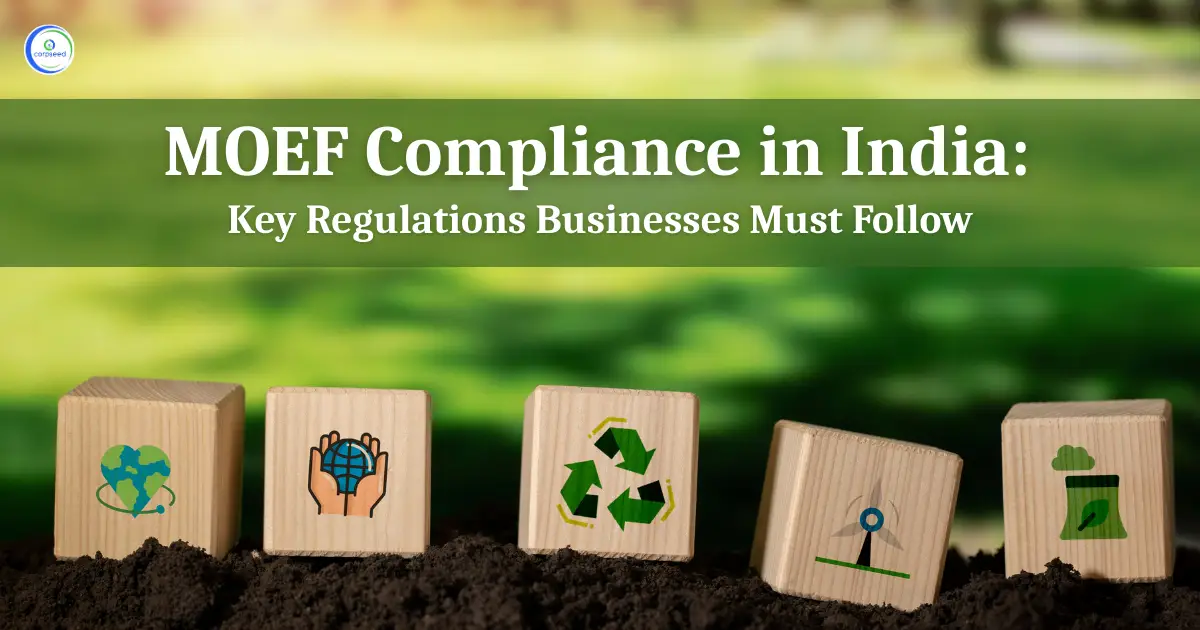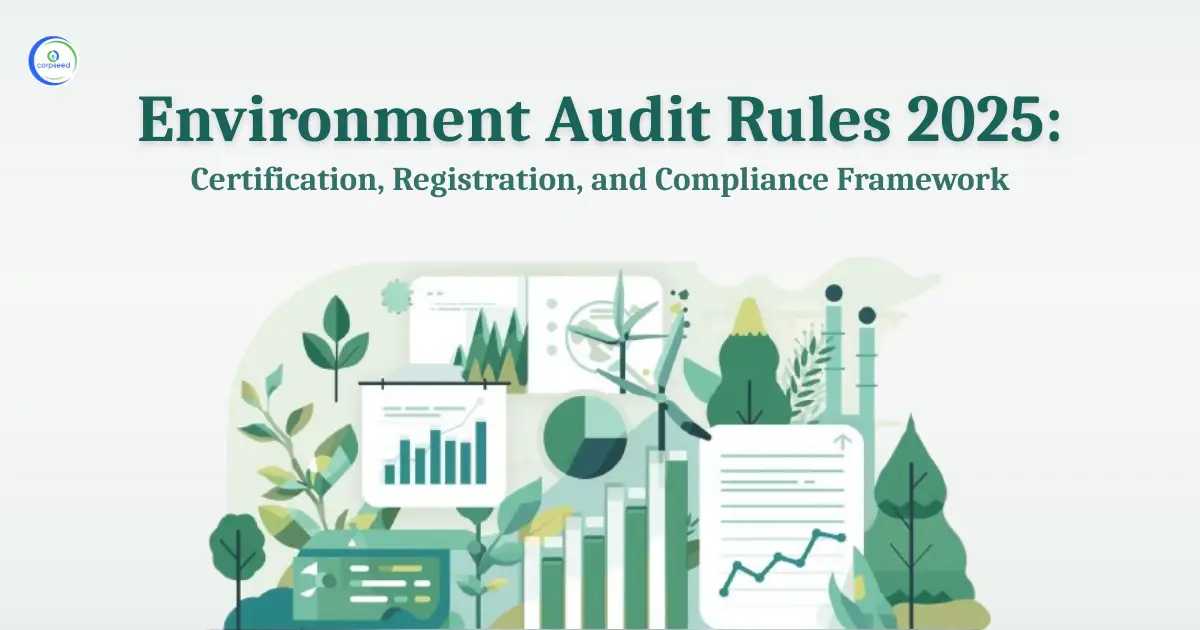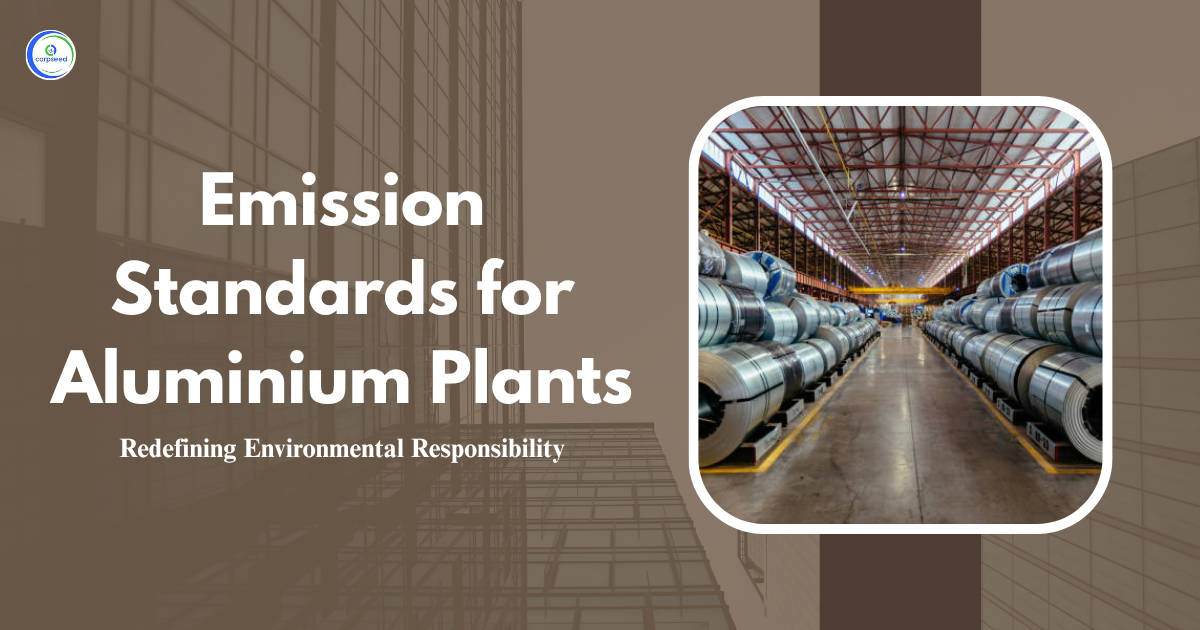Introduction: Environmental Clearance
The focus on the environment has gone down since the Industrial revolution took place in India, throughout the stage the public including the government was very nominal aware of the environment and industrial impact on the environment. Looking over the environmental issues the first act that was made in history was the Shore Nuisance (Bombay and Kolaba) Act, 1853, following the same there was a number of regulations came into effect after two decades of the first one, although the process of Environmental clearance has lots of hampers which is made in the process for a Company.
Table of Contents
- Introduction: Environmental Clearance
- What is Environmental Clearance
- What are the Regulation for Environmental Clearance and Pollution NoC in Maharashtra
- Categories of Industries for Environmental Clearance
- Procedure of Obtaining Environmental Clearance
- Required Documents for Environment Clearance
- Exceptions to Companies as Per the Location
- Flow Chart Procedure of Obtaining Certificate
- What is the EIA Report and Does it Require?
- Conclusion
The government is the authorized body of the country that monitors and regulates the same, Indian legislation has made the enactment of the environment for the formation of various other statutory bodies who monitor the same, and implement the regulation which comes into effect.
The first enactment was made for the regulation of Environmental Impact Assessment of River Valley Projects, 1978-79. Through the amendments, the regulation has been enhanced in several other sectors as well, which are Thermal Power Projects, Mining Schemes, Industries, etc.
What is Environmental Clearance
Environmental Clearance is the procedure which requires when any project is going to be established, prior to the establishment of such Project /Plant/Infrastructure to run, there is the procedure to be followed by the government regulatory bodies who give Clearance from their side after clarification from the established norms.
Obtaining Environmental Clearance is mandatory for every kind of industry that is going to operate at a particular location. There are certain categories of Industries that require great measures to be followed as per the risk that may be in place after the establishment of and running of the project.
The clearance is mandatory for a Project which is established at an ecologically fragile, or economically friendly location. The environmental clearance is a government authorization from the Ministry of Environment, Forest & Climate Change (MoEFCC) for the establishment of industry, factory, mining operations, etc.
There is a list of Projects which are mandatorily required to obtain Environmental Clearance that are highly polluting in nature. The Central Government and State government, have full authority and power to regulate this process.
As per the projects impact on the environment and its dangerous nature there are three categories, the first one goes with such projects which are extremely harmful to the environment comes under Category B which will be appraised to Category A if the location of such project is within 5km from the boundary of: (1) Protected area which are defined under the Wildlife Protection Act, 1972; (2) Critically polluted areas which comes under the Central Pollution Control Board constituted under the Water (Prevention and Control of Pollution) Act, 1974 from time to time; (3) Eco-Sensitive Areas as per Section 3(2) of the Environmental Protection act, 1986, and (4) Interstate state boundaries and international boundaries: provided that for River Valley Projects, Thermal Power Plants, or Industrial estate/parks/complexes/areas, export processing Zones (EPZs), Special Economic Zones (SEZs), Biotechnology parks, Leather Complexes and hazardous waste treatment, storage, and disposal facilities (TSDPs), all such appraisals shall be made at the Central level even if such project is located within the 10 km of the range.
However, the requirements regarding the range of 5km or 10km of the inter-state boundaries can be reduced or eliminated by an agreement between the respective States or the UTs sharing the common boundary which does not fall within the 5km or 10 km.
What are the Regulation for Environmental Clearance and Pollution NoC in Maharashtra
There are so many regulations at the Central level which are implemented in Maharashtra, to restrict the environmental damages that might arise and measures to control them.
Few of the important regulations are:
- The Environment (Protection) Act, 1986
- The National Environment Tribunal Act, 1995
- National Environment Appellate Authority Act, 1997
- The Biological Diversity Act, 2002
- National Green Tribunal Act, 2010
The Maharashtra Pollution Control Board (MPCB) is the Governing body under which implements the regulation being passed by the Central Government or CPCB. which have different environmental legislation. The MPCB was established in September, 1970, and the Maharashtra administrative bodies implement and impose penalties to the operations/projects which causes environmental pollution in the State.
All such projects/industries which might get operationalized under the State of Maharashtra, which might cause pollution in the State have to obtain approval on a mandatory basis from the Maharashtra Pollution Control Board. However certain Industry industries are exempted from obtaining the consent, all such industries which are exempted must have to adhere the conditions mentioned below:
- Industries that are established under the “Demarcated Industries Estates”
- Industries that have not invested more than Rs 1 crore of Capital investment over the project equipment.
- Industries that have not invested more than Rs 2 crore over the Hosiery Machinery.
- Industries that do not make any kind of noise or air pollution.
- Industries that do not cause environmental, land, or water pollution.
There are four divisions of Maharashtra Pollution Control Board for the different kinds of industries as per the pollution level which Industry can cause, these are:
- Red: all such Industries which have pollution index score of 60 or more.
- Orange: all such Industries which have pollution index in the range of 41 to 59.
- Green: all such industries which have pollution index in the range of 21 to 40.
- White: Industries which have pollution index scores in the range of 0 to 20.
Categories of Industries for Environmental Clearance
There are more than 35 industrial projects which require a mandatory environmental clearance screening process and the Projects that are being established must cover the evaluation process of the Environment Clearance. Through this the assessment is made looking the environmental impact of the project and pollution control measures that are being taken must also be measured, following which the permission might be granted.
Majorly the Environmental Clearance for the different types of the Project are divided into two categories which are:
Category A: under category A, the Projects which require mandatory Environmental Clearance in order run their establishments/ Project/ Industry. Most of the time the screening procedure is not required under Category A projects as it comes under the category of mandatory Environmental Clearance. All such projects which fall under this category go through the process under the Ministry of Environment, Forest and Climate Change for Environmental Clearance Certificate.
Category B: The projects which come under this category are minimally harmful or less harming in nature, these projects undergo mandatory Screening mechanism, which comes under the State of Maharashtra. This category includes two sub categories which are B1 and B2. Projects or Industries which under B2 category do not require an EIA report, however, the Appraisal Committee can ask for an EIA report looking at the Projects/Industries environment friendly measures.
There are certain categories which mandatorily requires Environmental Clearance irrespective of the type of the Project/Industry being setup:
- Archaeological monuments
- Scenic areas
- Religious places and monuments
- Beach resorts
- Coastal areas such as Mangroves, breeding grounds of Specific Species
- Estuaries
- Gulf Reigns
- Biosphere reserves
- National parks and sanctuaries
- National lakes and swamps
- Seismic zones
- Tribal Settlements
- Defense installations
- Airports
- Border areas
These areas mandatorily requires Environmental Clearance Certificate.
Procedure of Obtaining Environmental Clearance
- Screening: The screening process is conducted for Category B type of projects. The Screening process is conducted by the State-level Expert Appraisal Committee which identifies the project category under which it falls.
- Scoping: This is the procedure for Project Category A and B1. The Central Expert Appraisal Committee (CEAC) for Project which comes under category A and State level Expert Appraisal Committee (SLEAC) for B1 identifies the terms for the preparation of the EIA report.
- Public Hearing: Public hearing is conducted for grievous Environment harming Projects Projects which come under Category A and B1. The Public Hearing is conducted by the District Collector a Chairperson, officials of SPCB and members of Gram Sabha or surrounding locality to record the objection of the public.
- Appraisals: The Environment Appraisal Committee and SLEAC finalize the reports, and NOCs and transfer the same to the Ministry of Environment for Clearance purposes.
Required Documents for Environment Clearance
The EIA report shall be Complied with as per the TOR followed during the Scoping stage. Documents required are:
- Project Description (Name of the Project, Location, water requirement, waste management, proposed area, etc.)
- Signatory Details
- Risk Mitigation Details
- Site Layout/ Planned
- Details of Equipment Installed
- Test Report (if applicable)
- Details of Water and Electricity Connection
Exceptions to Companies as Per the Location
There are exceptions to the rules of Environmental Clearance for Industry or Construction based on the region where it will be established. Under certain geographical locations, it is mandatory to obtain Environmental Clearance such as:
- Religious and Historic Premises
- Beach, seashores
- Archaeological Monuments
- Scenic Regions
- Breeding Grounds of Specific Species
- Hill resorts
- Coastal Regions that are highly rich in Mangroves
- Gulf regions
- Breeding grounds of Specific Species
- Biosphere Reserves
- National Parks and Sanctuaries
- National Lakes and Swamps
- Areas of Scientific and Geological Interests
- Seismic Regions
- Tribal Settlements
- Border Regions
- Defense Installations
- Airport Premises
Flow Chart Procedure of Obtaining Certificate

What is the EIA Report and Does it Require?
Environmental impact assessment is the tool which integrates all environmental issues into the process of development, from the grassroots level. Through this procedure the environmental cause and damages that will be made by the Project is checked and what are the countermeasures that are being taken to curb such environmental issues are also considered. Through the Environmental Impact Assessment it is made clear that the project operator is making strategies to save the environment at the time of installation and check out all environment impacts that might arise through the establishment of the project.
Conclusion
Environmental Clearance is mandatory by the Maharashtra government and Central Pollution Control Board for the environment protection purposes. The requirement of an Environmental Clearance certificate makes the industries mandatory with their own conflicting interests. There are not such enactments which specifically focus on the Environmental Clearance, because the Environmental Impact Assessment covers the Environmental clearance procedures as well. However, looking into the environmental measure, the government should make a regulation Specifically projecting focus over the Environmental Clearance and making it mandatory for Projects/Industries being about to come into existence, no matter what the pollution level is.
This portion of the site is for informational purposes only. The content is not legal advice. The statements and opinions are the expression of author, not corpseed, and have not been evaluated by corpseed for accuracy, completeness, or changes in the law.
BOOK A FREE CONSULTATION
Get help from an experienced legal adviser. Schedule your consultation at a time that works for you and it's absolutely FREE.







_Corpseed.webp)
.webp)
